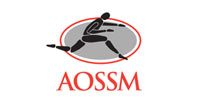Knee Alignment
Effect of Slope-Reducing Tibial Osteotomy With Primary Anterior Cruciate Ligament Reconstruction on Clinical and Radiological Results in Patients With a Steep Posterior Tibial Slope and Excessive Anterior Tibial Subluxation
Background: A steep posterior tibial slope (PTS) and excessive anterior tibial subluxation of the lateral compartment (ASLC) have been considered to be associated with inferior graft outcomes in primary anterior cruciate ligament (ACL) reconstruction (ACLR). Case series studies have demonstrated that combined slope-reducing tibial osteotomy can greatly improve knee functional scores and stability in revision ACLR. However, there is currently no comparative study evaluating the clinical benefits of osteotomy procedures in primary ACLR.
Clinical Outcomes and Long-term Survivorship After Osteochondral Autologous Transfer Combined With Valgus High Tibial Osteotomy
Background: Osteochondral defects of the medial femoral condyle combined with varus malalignment in young and active patients are a debilitating condition, which can result in early osteoarthritis. Osteochondral autologous transfer (OAT) combined with valgus high tibial osteotomy (HTO) might therefore be a comprehensive solution to maintain long-term knee function.
Effect of Meniscal Tear Patterns and Preoperative Cartilage Status on Joint Space Width After Medial Opening-Wedge High Tibial Osteotomy
Background: Medial opening-wedge high tibial osteotomy (MOWHTO) is performed to treat young adults with medial compart- ment knee osteoarthritis associated with varus deformity. However, factors influencing joint space width (JSW) vary according to the type of medial meniscal tear and have not yet been completely elucidated.
Knee Osteotomy Decreases Joint Inflammation Based on Synovial Histology and Synovial Fluid Analysis
Purpose: To examine the biological changes in the joints of patients with knee osteoarthritis (OA) before and after around- knee osteotomy (AKO), focusing on synovial fluid (SF) and synovial pathological changes.
20-Year Outcomes of High Tibial Osteotomy - Determinants of Survival and Functional Outcome
Background: High tibial osteotomy (HTO) is a successful joint-preserving procedure for the treatment of medial compartment osteoarthritis. Long-term survivorship of HTO ranges from 40% to 85%. There are consistent factors that predict failure.


















